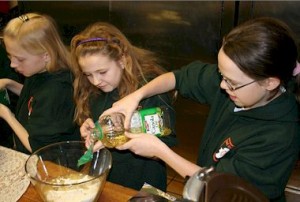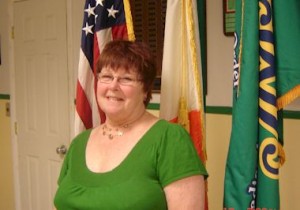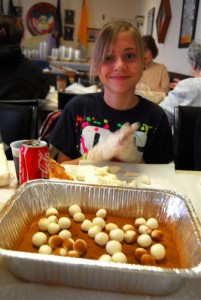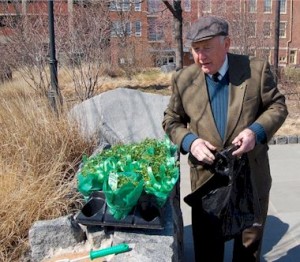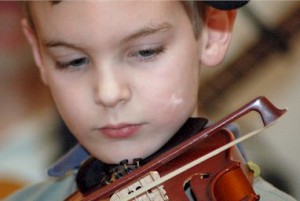By Tom Slattery
Building on the success of its initial entry into the realm of education, that of Irish cultural education for youth from 7 to 17, AOH Division 10 of Trenton, New Jersey, just completed its second Annual Gael Scoil.
Gael Scoil is Gaelic for Irish School. Held over the weekend of February 28 and March 1, the second class built on the success of of the 2008 venture and set a standard for future years. Last year Division President John Walsh stated that the Gael Scoil would be the Division’s signature event, and this year’s success was testament to the seriousness of that statement and Division 10’s commitment to make it happen..
The original committee returned intact but with one important addition, Gerry O’Rahilly. Gerry brought with him not only an intimate knowledge of computers which he translated into a clarification of the school’s logo, professional stationery, brochures and posters, but also that key commodity that escapes so many cultural organizations, youth and its enthusiasm. You better believe us older cats took advantage of this and worked even harder, and sometimes even smarter.
We learned a lot last year and so incorporated some new classes while rearranging some others. We also learned that the end of June was not the best time as we were up against vacations and other sports camps, so we took advantage of a rare open weekend in the Notre Dame High School schedule and switched the class to the start of the St. Patrick season. With the luck of the Irish we finished up about 12 hours ahead of the season’s worst snowfall.
Knowing that T-shirts, great for summer, would not work in winter, we voted on giving the kids “hoodies,” which looked like a budget-breaker until Joe Bradley and Mick McCabe combined to “make it happen.” We realized that the economy might prevent some from being able to attend and so we set up a sponsor program, which several organizations supported. Through this we grew attendance from 17 to 26, a 50 percent increase.
Two sessions we added were Irish Baking and Irish Movies. Baking was a wild success because of the four “bakers” from the Ladies Division 10. This was a true hands-on class that the kids loved. Their efforts were baked and then wrapped during the next few classes so that they all had their own loaf of soda bread to take home, along with the recipe. Since one of my grandsons attended, I can vouch for his “cake” which we had for dinner. In the Movies session we had to cut the time short, but the limited viewing of “Into the West” drew so many questions, we know it is a “keeper” session.
Aware that February 28 was not the best of times to learn Gaelic football outdoors, we came up with an alternative, which turned out even better. Pat Trainor, the local GAA Development Officer, started the Scoil off with a professional PowerPoint presentation with added film clips of Gaelic Football, and followed with a Q&A session which drew great participation. He also left a GAA football to be raffled among the students. Both Daltai and the Carrolls, Mark and Tim, built on their 2008 success in Language and Musical Instruments respectively, while filling longer time slots. The musical instruments covered were the harp, fiddle, bodhran, Irish pipes and dulcimer.
Jim McFarland gave a PowerPoint presentation in geography, which included a hand-out of all his pictures in a folder. Other topics which were all well received included history (Tom Slattery), dance (Joanne Connell Knox of DeNogla), songs (Tom Glover), highland bagpipes (Marty and Ian Ferrick), and storytelling (Tom Slattery).
There are so many that helped make this event a success. First, there is the staff of Notre Dame High School in Lawrenceville, N.J., who allow us the use of one of the first-class venues in the area. Once again Mary Yeaple from York helped us with the county flags. This year she only had to lend us four since the Set of 32 which Division 10 had purchased came in, but missing four. John McKenna, a personal trainer at Notre Dame, again provided the expertise in meeting state and local filings and was the required on-site medical person. The committee consisting of Division 10 members Mick McCabe, John Walsh, Jerry McGuire, Gerry O’Rahilly and Don Carroll along with Trenton Division 1 member, Jim McFarland, and myself met pretty much weekly since October. Also, kudos to our bakers Patty Walsh, Maggie Connell, Philomena McCabe and June Balaz. June did double duty as a monitor throughout the two-day program.
Financial assistance came from McCabe Concrete Foundation LLC, who sponsored the “hoodies,” CCC Celt, who sponsored five students, Niall Brady whose generous donation helped to cover lunches, morning coffee and donuts, as well as a couple of kids. Sons & Daughters of Erin and AOH 1 Trenton each sponsored a student. George Zienowicz of Na Bodach once again provided us with a great entrance sign.
With three students from Philadelphia and one from Lower Bucks County we now realize that Philly and even Delaware County are not that far away. After all Notre Dame is only two miles south of Exit 7A (Route 206) of I95. Therefore we will try harder to attract more students from these areas next year. Without recruiting additional teachers, I feel we will be able to handle a maximum of 50 students in 2010. This is a very reachable number, so if you are interested either in sponsoring or sending a student next year, please let us know either through www.aohdiv10.org or 609 587-3208. Check the AOH website as well as Irish Philadelphia to see our 2010 Gael Scoil weekend date.

